Many bird species are migratory, meaning they travel between two different homes depending on the season. However, several of our feathered friends spend their winters in Iowa. Often, these birds have special adaptations that allow them to survive in the colder months.
Winter birds are often easier to spot than birds in the summer, as the branches of trees are bare. In many cases, these bird species were in Iowa the whole time, but you may not see them as much when there are leaves on the trees.
Here’s a list of the most prominent birds that spend their winters in Iowa:
1. Cardinal

This species is a resident of Iowa, meaning they stay throughout the whole year.
©Thomas Torget/Shutterstock.com
Cardinals are bright red birds that are pretty easy to identify. They survive the winter by fluffing up their feathers, which provides some extra insulation. They also roost with others during the coldest months, sharing body heat.
In the winter, Cardinals also rely heavily on seeds. They may also consume fruits from late-blooming trees like dogwood and sumac. If you fill your bird feeder with sunflower seeds, they may visit it, as well.
2. Blue Jay

When the branches are bare, it is much easier to see these brightly colored birds.
©krblokhin/iStock via Getty Images
Blue Jays are a fairly common bird in Iowa, and you may notice their flash of blue particularly during winter. They spend the fall cache acorns and other months, which provides them with extra food during the winter. You may also notice them foraging in flocks, which allows them to scare off predators.
3. Downy Woodpecker
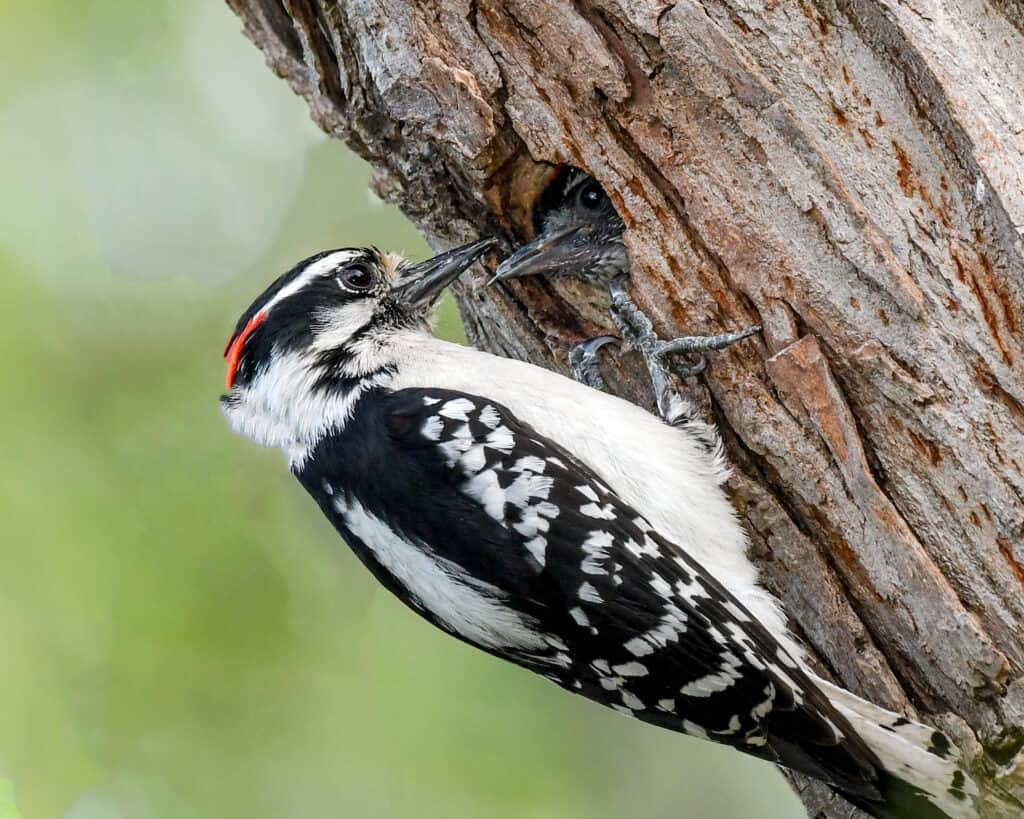
These birds are known for their strong beak, which allows them to excavate nesting holes.
©Brent Barnes/Shutterstock.com
This smaller woodpecker species creates a warm nest during the winter to fend off the cold. They add insulating materials like feathers and moss to their cavity, allowing them to conserve heat.
They often have no issue retrieving slumbering bugs during the winter months. Their strong bill and specialized tongues allow them to access hidden insects within frozen wood.
4. Hairy Woodpecker
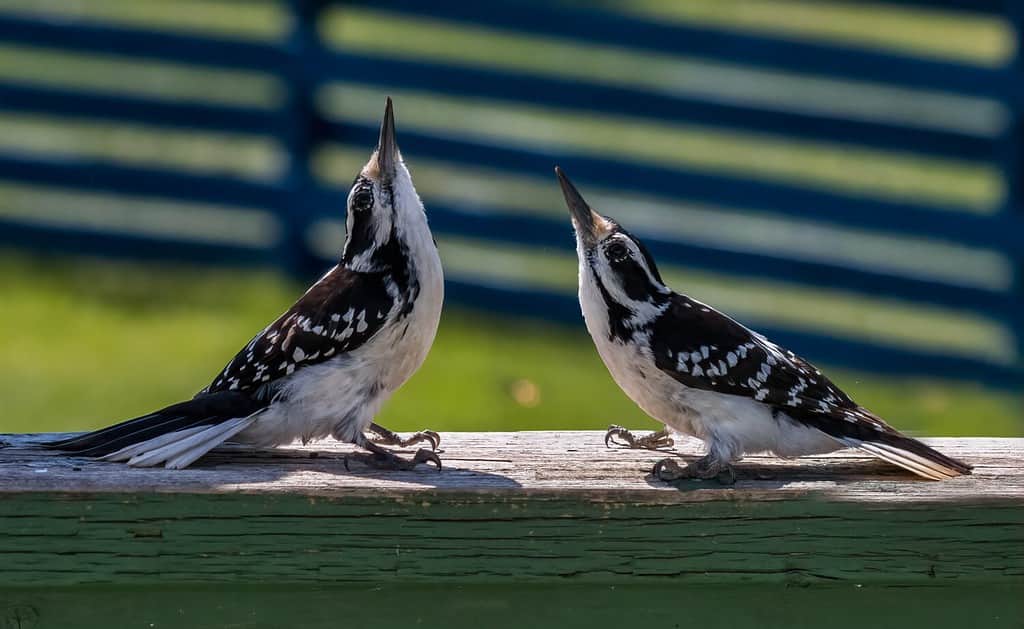
These woodpeckers can be harder to identify, as they aren’t brightly colored like some others.
©Fiona M. Donnelly/Shutterstock.com
Hairy woodpeckers are known for drilling holes in sap-laden trees to provide an extra sugar boost during the lean winter seasons. They also excavate holes for their nests in the spring, though they don’t typically stay in these holes through the winter months.
5. White-breasted Nuthatch
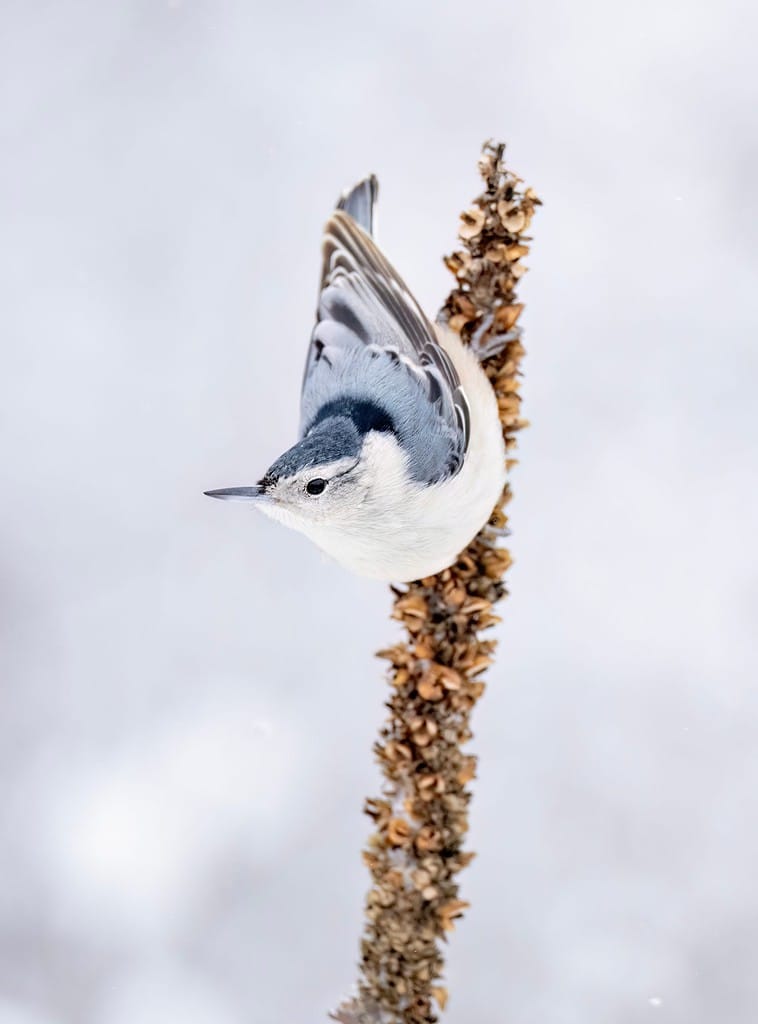
These birds will forage for food throughout winter, relying on their food caches for a steady supply of food.
©Jeff Caverly/Shutterstock.com
White-breasted Nuthatches take up a relatively common strategy to survive the winter – food caching. They store seeds and nuts in hidden cracks, retrieving them later when they get hungry. They can potentially remember the location of thousands of seeds spanning several miles.
They also have the ability to lower their body temperature during periods of inactivity, allowing them to conserve energy. Their smaller size also limits the number of calories they need during the winter.
6. Red-breasted Nuthatch
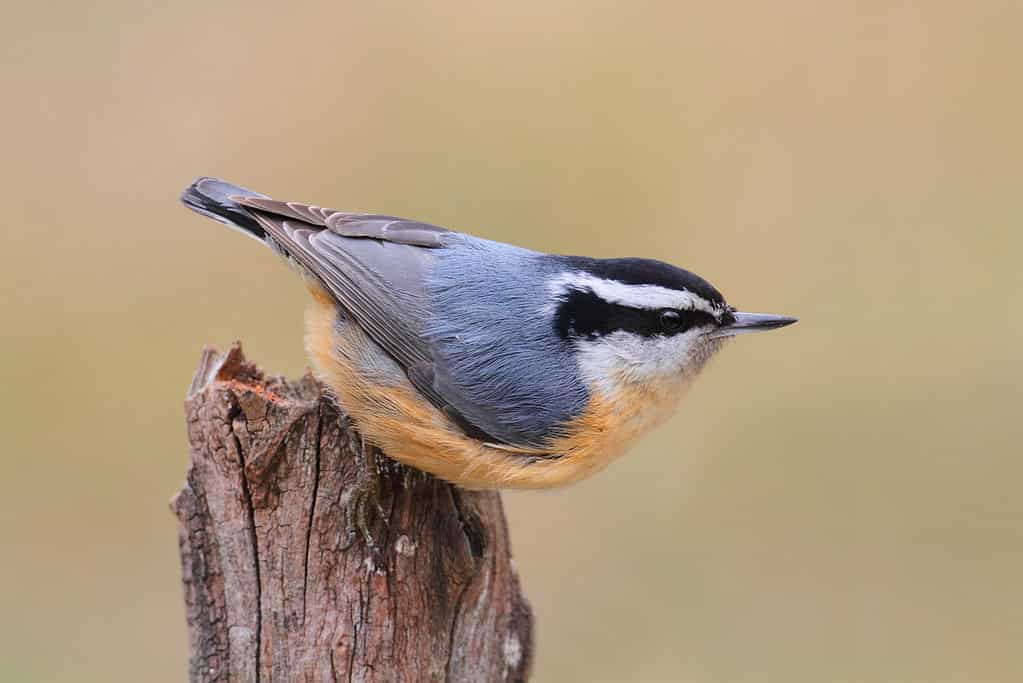
Despite their name, these birds usually have more of an orange belly than a red one.
©iStock.com/SteveByland
Red-breasted Nuthatches prefer pin seeds, which are available throughout the winter. These conifer specialists are able to extract seeds from cones, providing them with a sustainable food source.
During the winter months, these birds may also form small flocks. These provide some warmth and an added layer of protection from predators.
7. American Tree Sparrow
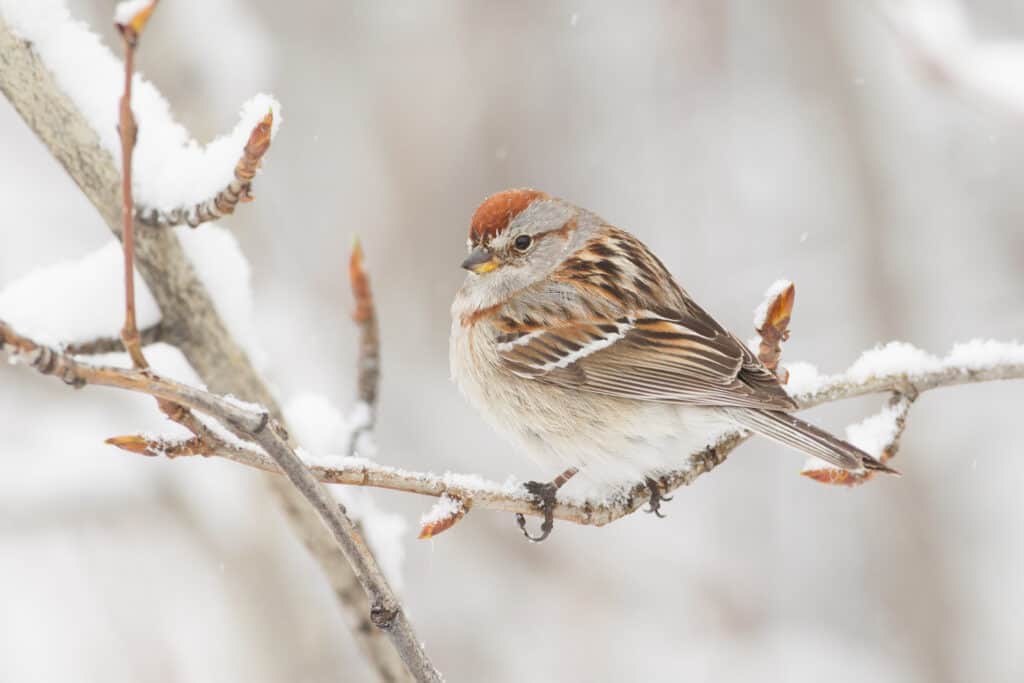
These feisty birds will spend much of the winter foraging.
©Jukka Jantunen/Shutterstock.com
American Tree Sparrows spend much of their time in the winter foraging for insects and seeds. They can even find seeds during snow coverage when they scratch the snow to access buried food sources.
During the night, this species may also huddle together for shared warmth and protection from owls.
8. Black-capped Chickadee
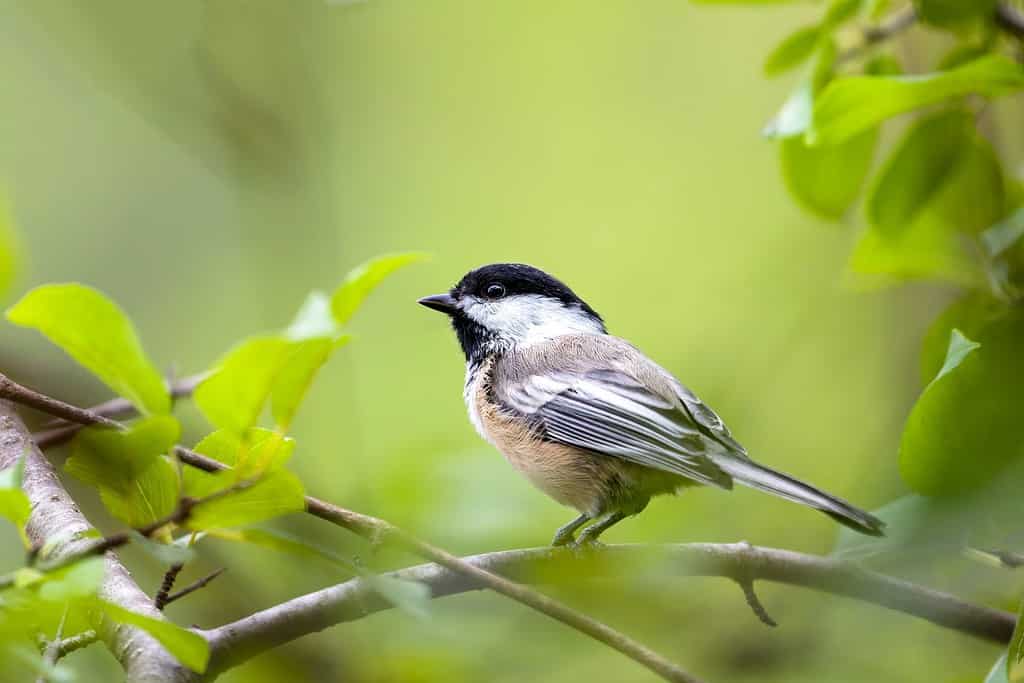
These chickadees are year-long residents of Iowa.
©Manu M Nair/Shutterstock.com
These tiny birds make heavy use of local bird feeders, where they prefer sunflower seeds, peanuts, and suet. They also have a relatively low metabolic rate, allowing them to thrive on fewer calories than other birds.
9. Tufted Titmouse
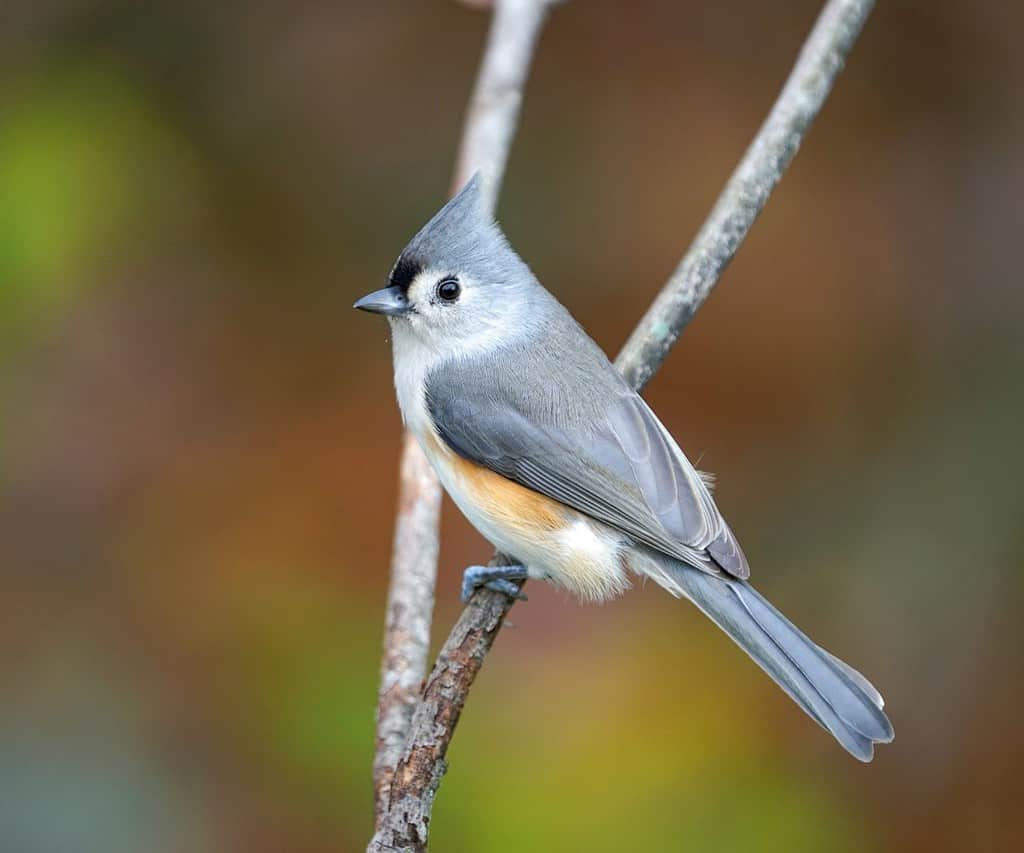
These birds are often described as looking like baby Blue Jays. However, they aren’t related to Blue Jays at all.
©ND700/Shutterstock.com
Titmice are a truly opportunistic bird. They will eat just about anything they can find, including seeds, insects, and fruits. Thanks to this flexibility, they often find it easier to locate food during winter. They may also reuse old nest holes for winter roosting, allowing them to conserve some body heat.
10. Eastern Screech-Owl

Baby Eastern Screech owlets spend much of their time in nesting holes. However, these aren’t used during the winter.
©Carol Hamilton/iStock via Getty Images
Screech-owls are active at night when they hunt for small mammals and insects that are active during the cooler months. They have a slow, gliding flight that minimizes their energy usage, allowing them to get by with fewer calories.
The photo featured at the top of this post is © iStock.com/DarcyMaulsby
Thank you for reading! Have some feedback for us? Contact the AZ Animals editorial team.






